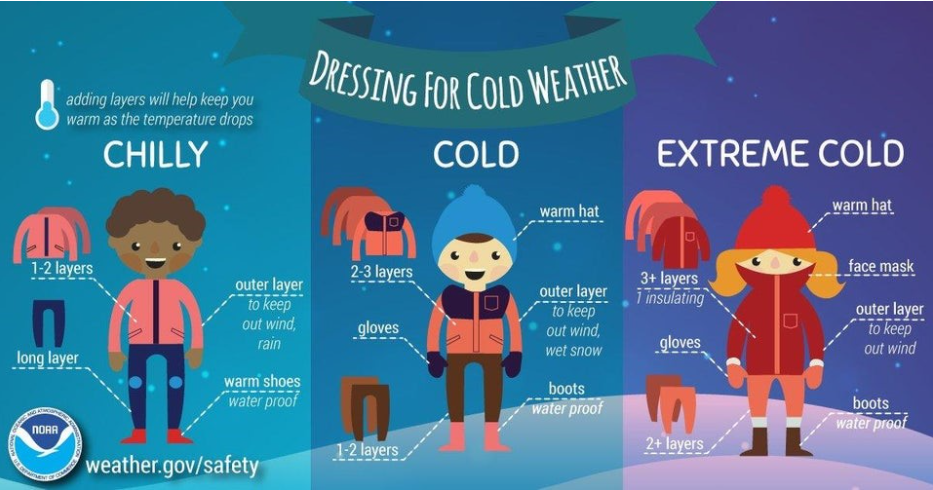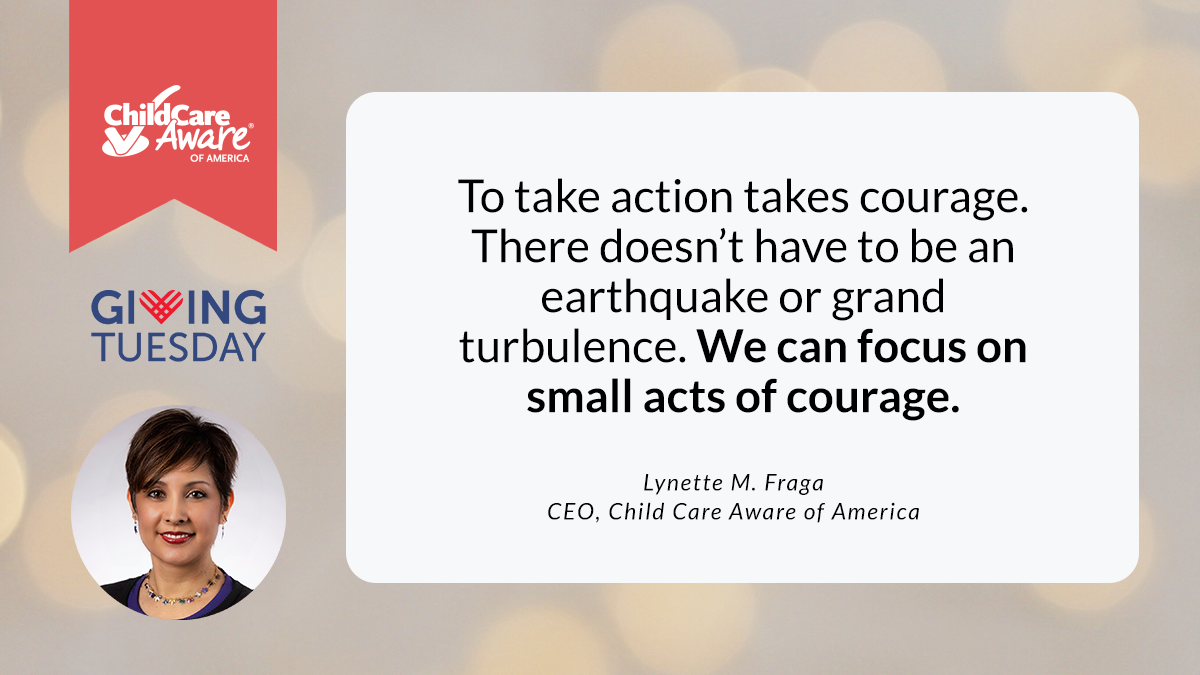Remember, as winter approaches, it can bring with it additional hazards. Child care providers can take steps to keep children safe from winter hazards such as extreme cold, snow, ice and the use of holiday decorations.
Winter Weather
Children need extra protection from cold weather. They are not able to regulate their body temperature like adults so they can quickly develop a low body temperature.
Caring for Our Children offers guidance for keeping children safe in cold weather:
- Children should wear layers of loose-fitting, lightweight clothing
- Children should wear a hat, coat, waterproof boots and gloves/mittens. Encourage parents to send an extra set of clothing to the child care program in case items get wet during outdoor play.
- Caregivers/teachers should check children’s extremities for normal color and warmth at least every 15 minutes.

Child care providers should monitor the weather, especially in the winter, to know what precautions to take to keep children safe outside. State licensing entities may offer guidance on what temperatures and wind chill are considered unsafe for outdoor play.
Outdoor Play in the Winter
Children benefit from playing outdoors in all weather other than the most extreme conditions. Taking children outdoors daily, even in the winter, is safe when clothing is appropriate. If you plan and prepare to keep yourself and children in your care safe and warm, everyone can benefit from the health and mental health benefits of being outside and active year-round. The length of outdoor time may need to be reduced due to the cold, so it will be important to make sure children continue to participate in physical activities inside.
Keep in mind that some play equipment may not be safe in cold weather. If the ground or playground surfacing is frozen, or if the equipment is slippery from ice or snow, it can pose safety hazards for children.
Active play will also keep children warmer while outside in the winter.
Winter Weather and COVID-19
COVID-19, influenza (flu), colds and other similar illnesses are caused by viruses, not exposure to cold air. While viruses like the ones that cause flu or colds are more common in the winter, the air circulating inside is the main cause of illness. Spending time outside in fresh air reduces the rebreathing of germs and the chances for spreading infection.
Winter Weather in Written Emergency Plans
Another safety precaution for child care providers to take in the winter is to double-check their written emergency plan and winter safety materials to ensure they are up to date. Winter weather can lead to a power outage or the need to shelter-in-place if travel becomes dangerous. It is helpful to check your emergency supply kit to make sure all your supplies are ready.
This is also a good time for child care providers to make sure parents know their plans for winter weather, including closures.
Child Care Aware® of America offers additional resources on winter weather and extreme cold.
Holiday Safety
In addition to keeping children safe from the cold and ice, it is important to remember that holiday decorations must be used safely, as they can pose a threat to children. The Mayo Clinic offers safety tips to remember when preparing for the holidays.
- Keep decorations out of reach of children.
- Any objects small enough to fit through a toilet paper tube can obstruct the airway of a child.
- Use power strips with built-in circuit breakers.
- Avoid putting too many plugs into one electrical outlet.
- Keep cords out of the way or behind furniture and insert electrical covers into any unused outlets.
- Closely supervise children who are helping to decorate.
- Let children decorate within their reach with non-breakable items.
Holiday decorations can also increase the risk of fire. According to FEMA and the U.S. Fire Administration, nearly half of holiday decoration fires happen because decorations are placed too close to a heat source.
Be sure to think of any other safety precautions needed based on decorations you might use.
Emergency Preparedness
By planning in advance, child care providers will be prepared to care for children during cold weather and the winter holiday season. For more emergency preparedness, response and recovery resources, visit www.childccareprepare.org.





